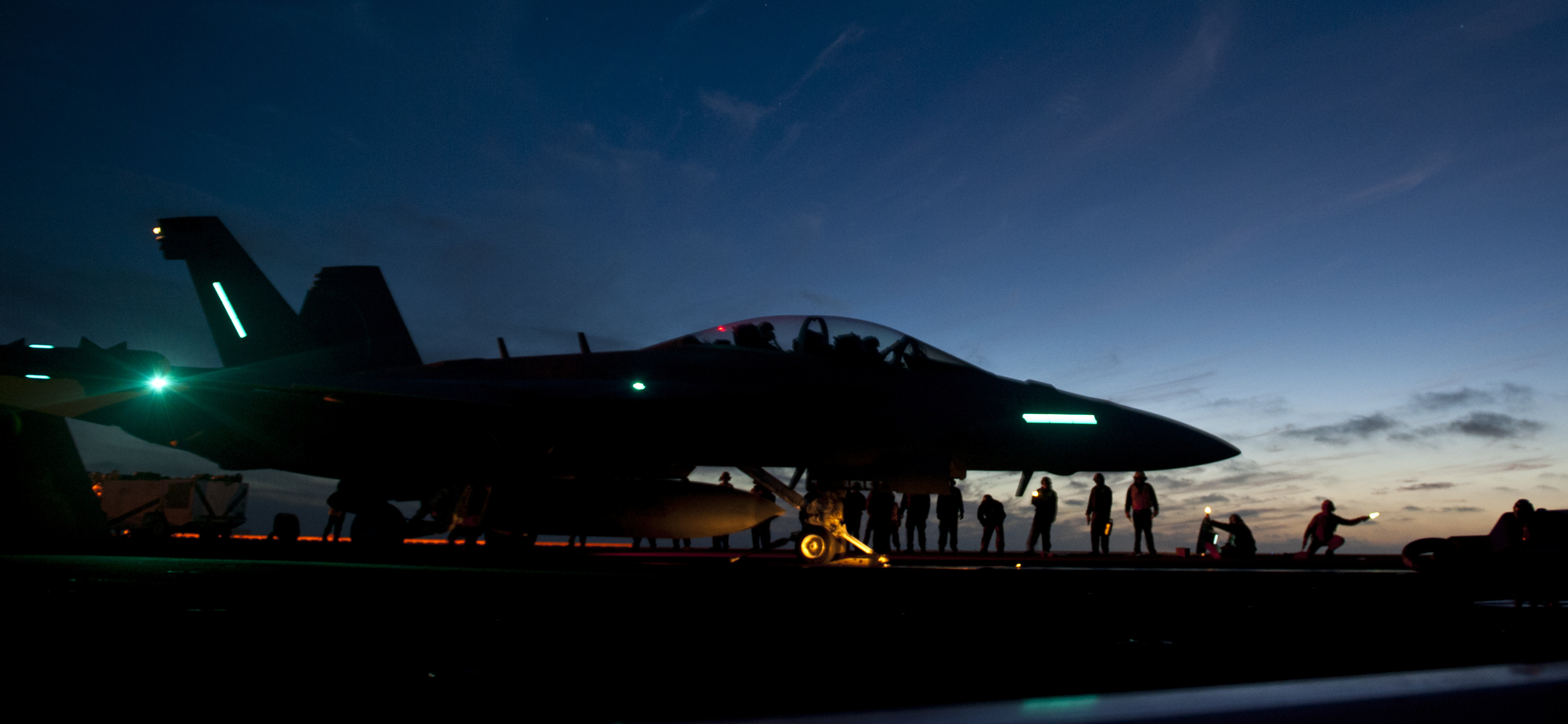
The Navy is eyeing expanding its fleet of electronic attack aircraft to better fit into the service’s next generation plan for fighting a high end air war.
As part of its yet-unpublished unfunded requirements, the Navy is requesting 22 additional Boeing EA-18G Growler electronic attack aircraft that the service would like to purchase in the Fiscal Year 2015 budget.
“Today we have the minimum numbers in each squadron,” Secretary of the Navy Ray Mabus said during a Wednesday hearing before the House Armed Services Committee.
“[This request] is an insurance policy, it’s a hedge”
The thought behind the request — according to sources in the Navy and in Congress — is to grow Growler squadrons from five to as many as eight aircraft per unit to support the airborne electronic attack (AEA) tactics the service envisions under the Naval Integrated Fire Control-Counter Air (NIFC-CA) construct to defeat complex integrated air defense systems (IADS) that are under development in Russia and China.
The Navy envisions an AEA force structure that will eventually include 16 airborne electronic attack squadrons, which means the service would need 48 additional frontline EA-18G aircraft to equip each unit with eight Growlers.
According to an industry source, the Navy would need a further 12 aircraft to fill out the fleet replenishment squadron, which trains the aircrew for the fleet squadrons.
The service would also need approximately ten more EA-18Gs for depot maintenance and attrition reserves to bring the total requirement to about 70 additional Growlers.
The Navy’s current program of record calls for a total of 135 Growlers which is adequate to equip each squadron with five Growlers.
Under the NIFC-CA construct, Rear Adm. Mike Manazir, the Navy’s director of air warfare, told USNI News in December 2013 that the service would need a minimum of two airborne EA-18Gs linked via a high-speed data-link to each other and to a third point—a Northrop Grumman E-2D Hawkeye — to perform a time distance of arrival analysis to precisely locate threat emitters.
Manazir said that the Navy hopes to use either the Rockwell Collins-developed Tactical Targeting Network Technology waveform or a Link-16 Concurrent Multi-Netting-4 network to link the jets together.
With the three separate points, the Navy expects to be able to narrow down the location of multiple mobile threat emitters to a narrow enough “ellipse” as to generate a weapons quality track in real time.
However, an industry source said that the tactic works best when there are three Growlers working in conjunction with each other. The Navy performed a demonstration of the new tactic with three Growlers in the summer of 2013, the source said.
While the Hawkeye has an excellent electronic support measures suite, it has neither the capability of the EA-18G nor can it get as close to the threat.
“The EA-18G is your best sensor for building that electromagnetic spectrum picture, what is out there that is emitting, and from that picture, the warfighters can decide how they will deal with that threat,” the industry source said.
“That could include jamming it with the Growler’s jamming pods, or attacking it utilizing the Growler’s capability to track that threat.”
The new technique is essential to the Navy’s plans to fight in a threat environment dominated by advanced integrated air defense systems that could include VHF radars that are better capable of tracking stealth aircraft and highly mobile double-digit surface-to-air missile (SAM) systems like the Russian–built SA-21 Growler or Chinese HQ-9.
Older techniques to suppress or destroy enemy air defenses relied on satellite imagery and long-range intelligence gathering aircraft to develop an order of battle for fixed enemy SAM sites. Those techniques are not effective against these newer more mobile threats.
The problem for the Navy is that five aircraft cannot support having three Growlers in the air continuously. If a carrier has three EA-18G in the air, and has to launch another three Growlers later, that is already beyond the capacity of the current air wing.
“The minimum is eight, is what we’d recommend,” the industry source said.
With eight EA-18Gs, a carrier could have three jets in the air while preparing to launch three additional Growlers. The two remaining aircraft would likely be in maintenance.





